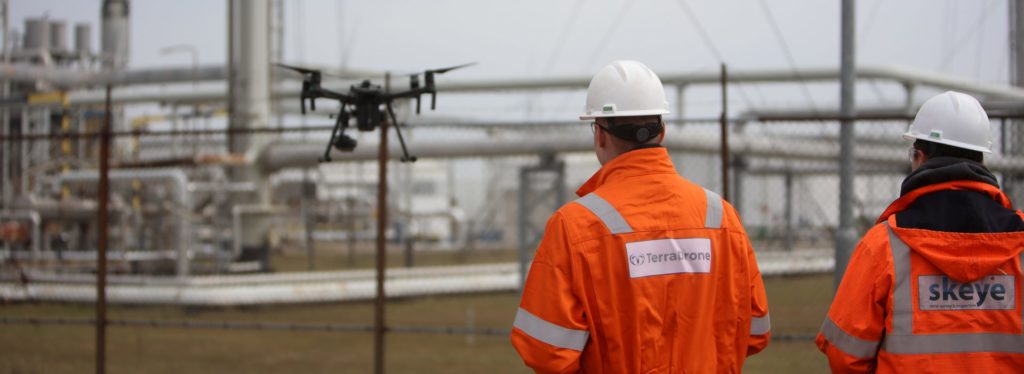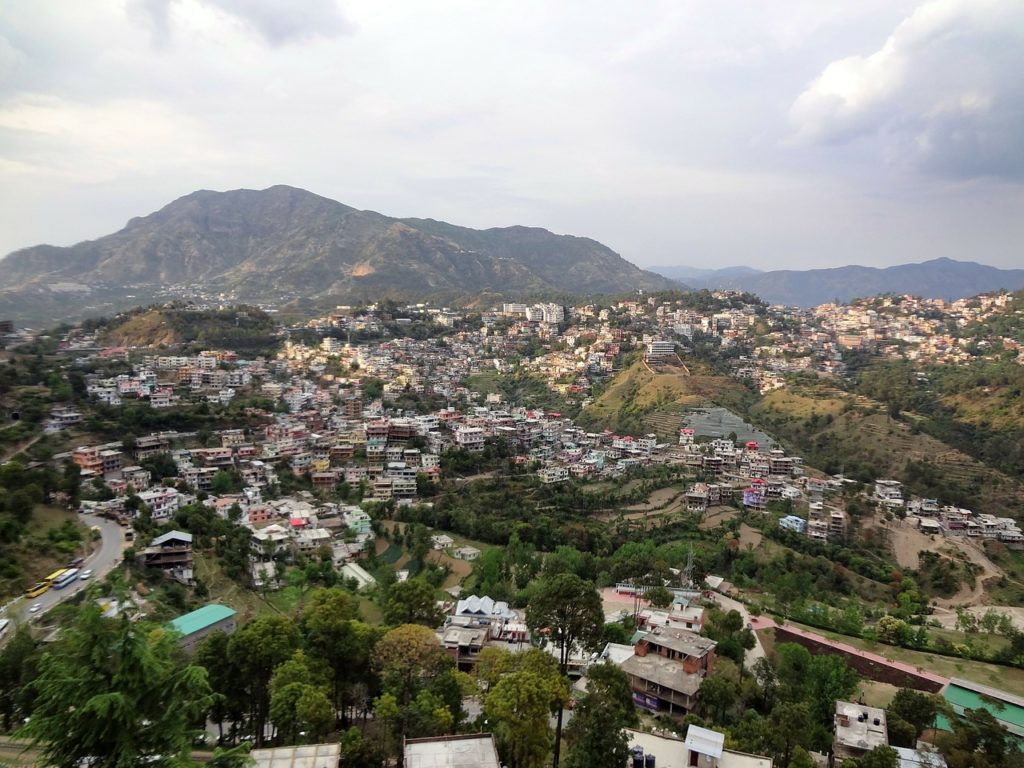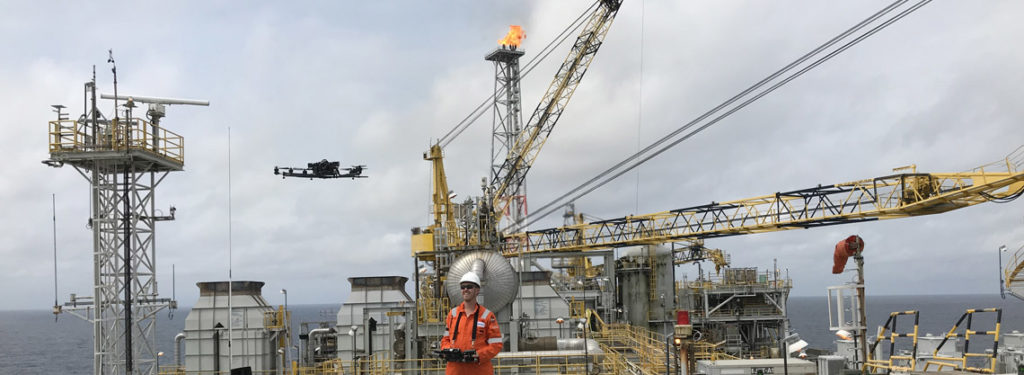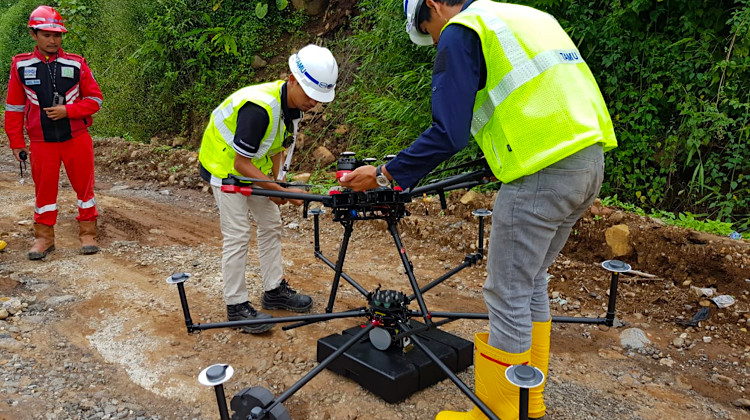With their headquarters in Japan and presence in more than 25 countries, Terra Drone has established itself as one of the leading commercial drone services company in the world. Recent news from the company has centered on everything from acquisitions of companies like Skeye to the first-of-its-kind Center of Excellence for unmanned aerial solutions which will be set up at IIT-Hyderabad in India. However, the story behind Terra Drone is about much more.
Terra Drone works with companies that have been operating locally for a long time and are familiar with local regulations and rules. By bringing these top, local companies under their umbrella, Terra Drone has been able to respond to local rules and regulations with ease.

Toru Tokushige
To find out what it has meant for Terra Drone to sort through the regulatory and logistical challenges associated with operating drones across the globe, we connected with Toru Tokushige, CEO, Terra Drone Corporation. We asked him about how Terra Drones helps their customers measure the difference drone technology makes, what it means to operate in such diverse regulatory environments, where the biggest opportunities for drone technology reside and much more.
Jeremiah Karpowicz: Terra Drone provides drone-based solutions for oil and gas, mining, solar, wind, infrastructure inspection all over the world. What can you tell us about the kinds of differences in these sectors that you’ve been able to make for your clients?Toru Tokushige: There are companies that are famous for their hardware. There are companies that are known for their software capabilities. And then there are companies which have made a name for themselves by providing drone-based services. Terra Drone is different, and better, from all those organizations because we provide a unique blend of all three – differentiated hardware, software, and services – to our clients.
Though we were established only in 2016, we are already well-known in the industry for investing in and joining forces with the best technology and solution providers across the world. Therein lies our strength. By leveraging the best drone technologies from each of our 25+ group companies and partners, we are able to offer the best, complete solution set for specific problem areas of our customers.
For example, we have the world’s first drone solution for underground mines, Terra SLAM, in our kitty. And to solve the problem of shortage of labor in the Japanese surveying industry, we developed and patented a solution utilizing Light Detection and Ranging (LiDAR) technology at a price which is one-third of the similar systems available in the market.
Moreover, we offer Cloud-processing for drone data so our customers can get their deliverables in the shortest possible time. Our India branch, Terra Drone India, is home to some of the best minds in the industry and acts as our central data-processing unit.
How are these differences measured? Is that in terms of the bottom line, or increases to safety, or something else?Our aim is to provide our customers with high-precision data quickly, safely, and efficiently – and at a low price. But if I were to pick the biggest differentiator which has attracted several of our customers, it would be the increases to safety. For example, by using Terra SLAM in underground mines, you can survey and check the site without making a worker enter a dangerous environment. This technology has been
received exceedingly well in South Africa where mining is an important industry and worker injuries a common occurrence.
Similarly, our solutions are allowing companies to undertake the inspection of large industrial structures such as towers, chimneys, bridges, and windmills, etc., safely and efficiently. With drones at work, their employees don’t need to climb dangerous heights for inspection services. An equally important area in this respect is that of transmission and telecom towers wherein the risk is not just from heights but also from high-voltage currents.
Not only have we solved these challenges for our clients, by using our novel Terra UTM (autonomous flight system) and Terra Mapper (3D modeling system) software, customers have been able to access high-precision data free from any manual error.

Terra Drone acquired Skeye in November 2018
It varies from industry to industry. For example, in the mining industry, there is a tendency among companies to own the system in-house. So, we provide them with the hardware as well as the processing software and train their team to utilize both. But in the power or oil and gas industry, the inclination is toward availing the services on an as-needed basis.
What are some of the most notable changes and developments that you’ve noticed impact the drone industry as a whole over the past year?The most notable factor impacting the growth of the drone industry as a whole is the regulatory ecosystem for UAV technologies. Since our industry is still new, the regulatory framework continues to change and evolve all over the world. Moreover, these laws vary from region to region – the commercial operations which may be possible in one part of a country may not be permissible in another state. Therefore, you need to have a deep, local understanding of the laws of any country you want to grow in. This is one of the major reasons Terra Drone Corporation decided to expand in a very planned and comprehensive manner in different regions of the world.
Tell us about Terra Drone’s expansion to 25+ countries over the past three years. How have you been able to make this happen, and what sort of opportunities have been created as a result of this growth?On a strategic level, before entering a new country or investing in new technology, we do extensive ground research to determine their market potential. Once we are convinced of the potential value a leading local drone company would bring to our group, we either buy a majority stake or form an equal partnership joint venture with them.
But the biggest factor which governs our decision is whether a company shares our vision of ‘growing together in an emerging market’ or not. We have been able to expand so rapidly because we have found partners that share our vision.
And as a result of being a part of our global network, these companies have been able to receive business from all over the world. For example, when a Japanese construction company wanted to execute a project under official development assistance (ODA) program in Indonesia, we supported our group company Terra Drone Indonesia to get the work order.
What are the biggest similarities and differences between operating a drone for inspection purposes in one region of the world versus another?Even with the same technology or similar industry requirements, the price and frequency of inspection services vary from country to country. Moreover, the regulations governing drone flights also vary greatly. For example, the protocols laid down by the American Petroleum Institute (API) are not the same as the protocols you need to follow in the European Union.
Are there any regions of the world that you’re especially focused on or hoping to further explore?We have already established our presence in APAC, European Union, Africa, and South America. But, in reality, the journey has only begun. We want to have a local presence in all the regions of the world and provide our services on all continents. As always, the focus is on partnering with those organizations that meet specific customer needs or solve the problems of an industry in a unique and cost-effective manner. We also want more software partners to strengthen our solution suite.

Terra Drone India helped Maharashtra government to access crop patterns and better manage water supply to more than a thousand villages
We have entered into a
strategic partnership with Unifly, a leading software company which provides a complete platform for the safe integration of drones into the airspace, with a capital investment of approximately ¥500 million. Together, we are developing unmanned traffic management (UTM) system which can be localized for deployment anywhere in the world.
Unifly has already demonstrated the prowess of its UTM system in several countries including the United States, Denmark, Germany, and Malawi. They have even partnered with a major European airline and air traffic controller.
We have also developed a UTM system called ‘Smart Drones’ with KDDI, a Japanese telecommunications major. This drone security and surveillance system has also been
successfully demonstrated in Japan by way of stadium monitoring. In the future, we would like to expand this service to the logistics field.
How do you see counter drone solutions and technology impacting the drone industry?When drone intrusions cause
hundreds of flight cancellations at UK’s Gatwick Airport in December 2018, or a
drone loaded with explosives leads to a fire in Saudi Arabia’s national oil facility earlier this month, you know there is a problem that needs stern handling.
This is why Terra Drone is committed to developing counter drone services on a global scale. We are ideally positioned to do so not only because of our global reach, but also because Unifly has gathered a great deal of expertise in this area by working with leading counter drones solution providers such as Fortem Technologies, Aveillant, Dedrone, Fraunhofer, Gryphon Sensors, and others.
Since many countries are opening up to BVLOS (beyond visual line of sight) operations, we are also working to develop a system of Remote ID which would allow unique identification of each drone. We will offer these services as a total package to government officials and aviation companies around the world.

Terra Drone specializes in FPSO inspections for oil and gas industry
Although the most promising markets differ from region to region, the industries where drones have uniformly proven to be most beneficial include oil and gas, mining, utilities, and renewables.
More specifically, the demand for large-scale drone operations is higher in countries which have large land areas. So, we have found huge opportunities in transmission line inspections in Thailand and Indonesia.
Infrastructure inspection services are also in great demand because using drones eliminates the risk to the manpower. Same is the case with the underground mining sector where drones help the workers to avoid injuries and health problems.
If I’m searching for support with efforts to utilize drone-based solutions for inspection purposes, what would you tell me about how Terra Drone can help provide me with the insight and answers I need to make a decision?Terra Drone’s core strength is to provide the customer with actionable insights. When we collect data or imagery, we do not dump it as is on the customer. We process is using sophisticated machine learning and artificial intelligence techniques, and generate reports that actually tell you what you can ‘do’ to make things better in just one glance.
For example, we have the system that automatically classifies the anomalies detected during inspections according to the location and the degree of the damage. The same system also automatically identifies vegetation near transmission lines.
We are continually working to improve both our hardware and software so we can provide superior services to our clients. Simply acquiring large amounts of data is not going to help. The most important thing is to understand what kind of customer value can be generated from that data.
We have our vision set on becoming the #1 industrial drone solutions provider in the world. And we are well on our way to make that vision a reality.



















Comments